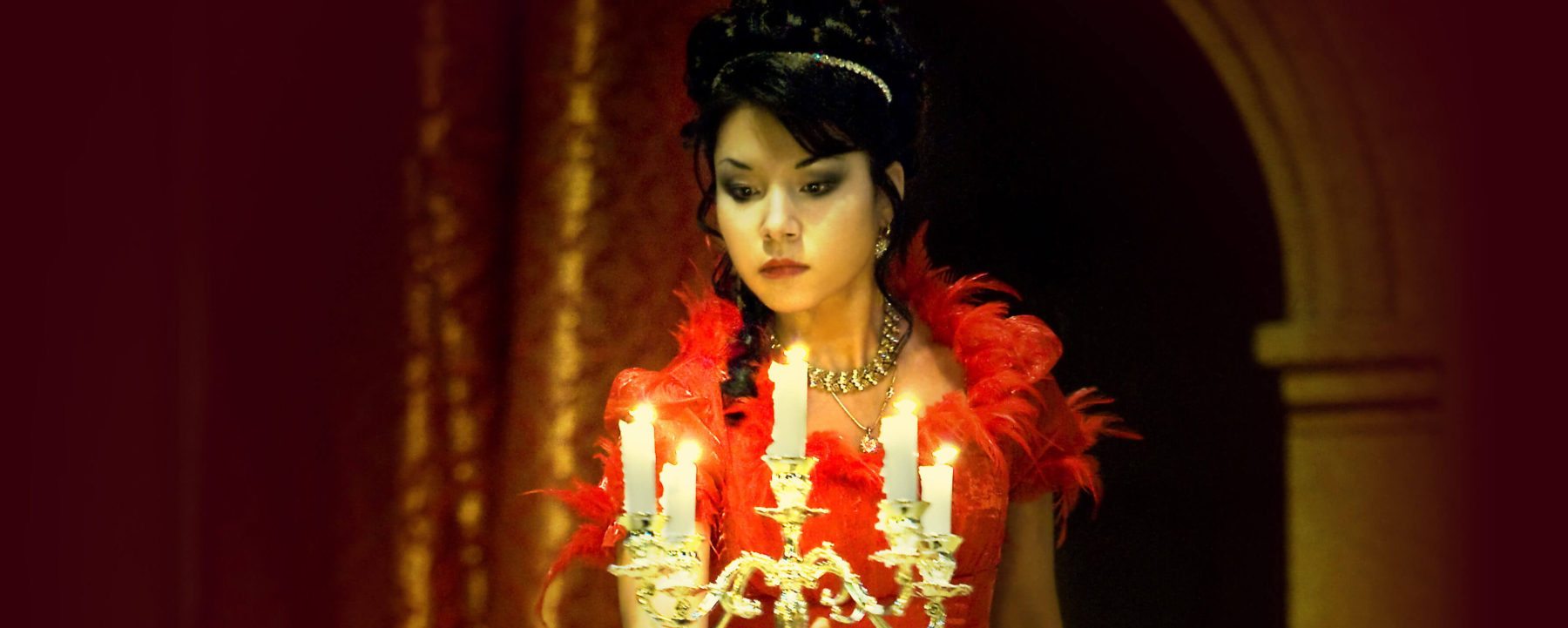Review: Tosca
A tragic, romantic yet sinister opera: Puccini’s Tosca is dramatically set under the threat of Napoleon’s invasion of Rome at the turn of the 19th century. Director Ellen Kent, assisted by conductor Nicolae Dohotaru and his talented orchestra, has brought this tour de force masterfully to life at the Warwick Arts Centre with her characteristic lightness of touch, allowing the beauty of the work to speak (indeed, to sing) for itself.
The show opens in the church of Sant’Andrea della Valle, where painter Cavaradossi (Vitali Liskovertsky) is helping his friend – the political prisoner Angelotti (Roman Balko) – to escape from the evil Baron Scarpia (Vladimir Dragos). Scarpia imprisons both men, and Cavaradossi’s lover, the jealous Tosca (Alyona Kistenyova) must make a terrible sacrifice to save him from execution in this dark tale full of torture, murder and suicide.
Opera is one of the hardest things to pull off – acting and singing in themselves are difficult to master, but to combine both is truly a remarkable skill, and Kent’s cast does an admirable job.
Simple set design and neoclassical costumes elicited the impression of grandeur without being too grandiose. Swift and subtle changes during intervals whisked the backdrop from the church to Scarpia’s apartment, the sombre prison and finally to the high ramparts of the castle, with lofty marble pillars remaining static throughout. Kent skilfully overcame the issues of levels in the piece by elevating the painter on scaffolding in Act I and having Tosca ‘jump’ to her death from behind a parapet in Act III, bettering the mistakes other directors have made with these tricky scenes in the past.
Opera is one of the hardest things to pull off – acting and singing in themselves are difficult to master, but to combine both is truly a remarkable skill, and Kent’s cast does an admirable job. Special mention must go to the charmingly crafted ensemble ‘Te Deum’ piece in Act I: nuns, priests and children blend melodies together in a glorious and colourful procession. Liskovertsky was moving as the doomed painter, but most convincing was Dragos as the lecherous and intimidating Scarpia, whose attempted rape of Tosca was horrifying to witness.
What I was most impressed by was the fact that I wasn’t always absorbed in the English surtitles; the stunning beauty of the music and onstage action was sufficient for understanding the pain of romance and torture, without having to understand the words.
Kistenyova as the eponymous heroine herself inspired mixed emotions: she seemed to me to be somehow stiff, inflexible and therefore insincere at times, especially in her half-hearted physical protestations against Scarpia and her romantic exchanges with Cavaradossi. Her vow to close his eyes with “a thousand kisses” prompted silent cursing on my part at more forthcoming awkwardness. But her famous aria “Vissi d’arte” was spine-tinglingly beautiful, and her suicide, with a dramatic sweep of her cloak over herself as she went, was simple but powerfully symbolic. She also brought out the comedic elements of Tosca’s jealousy with subtlety in Act I, which offset her more unconvincing moments.
What I was most impressed by was the fact that I wasn’t always absorbed in the English surtitles; the stunning beauty of the music and onstage action was sufficient for understanding the pain of romance and torture, without having to understand the words. The choices forced by love, the power of honour over corruption – these are what move one to understand one’s own raw humanity.
In a world where the arts are receiving budget cuts left, right and centre, it is imperative we make them accessible for students, so we can preserve them for the future.
It struck me that the vast majority of the audience members were middle-aged or elderly – what is it about opera that so many people of the younger generation seem to find inaccessible? Price is a key factor – in a world where the arts are receiving budget cuts left, right and centre, it is imperative we make them accessible for students, so we can preserve them for the future.

Comments